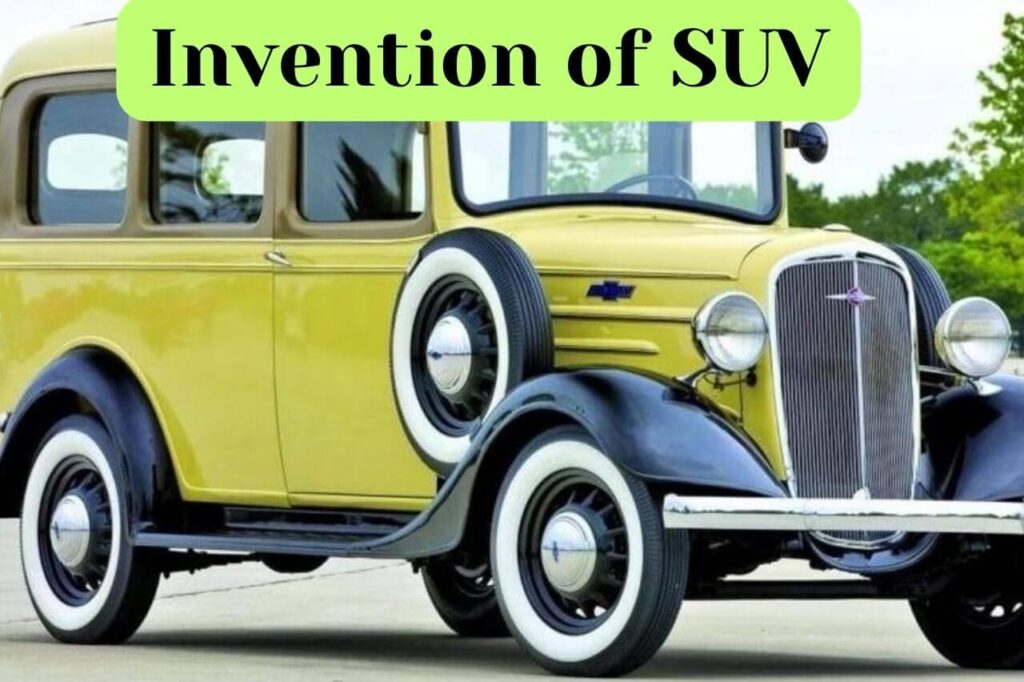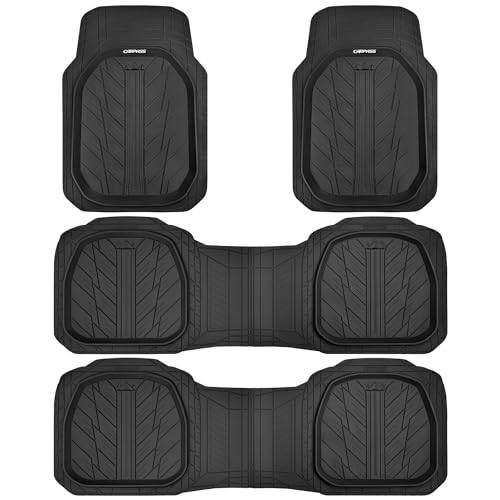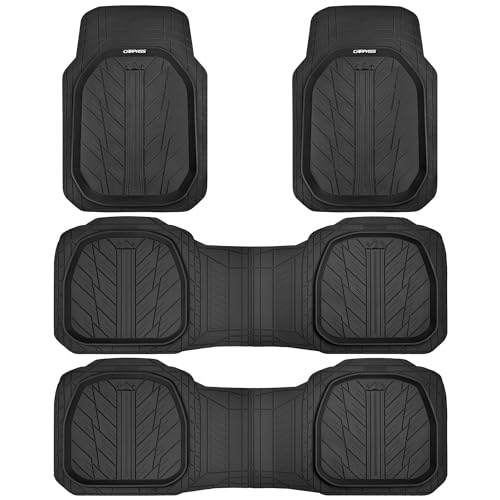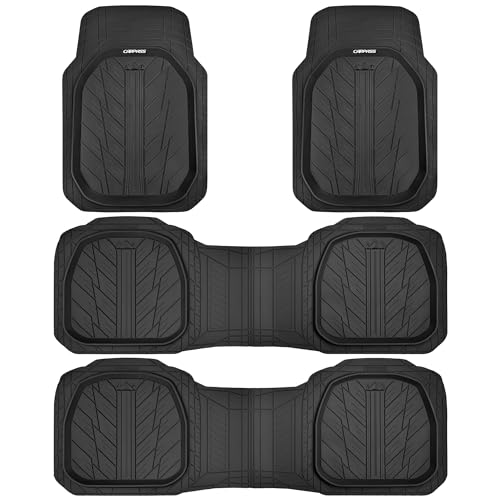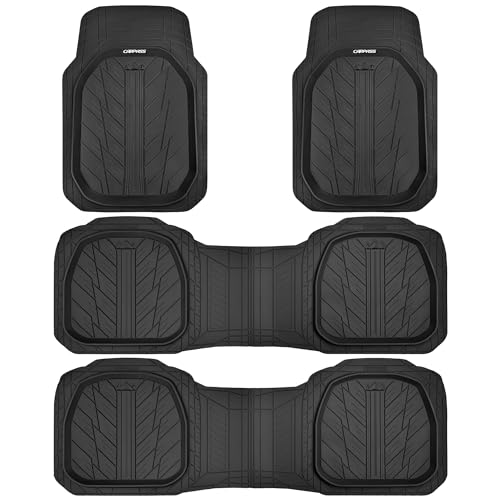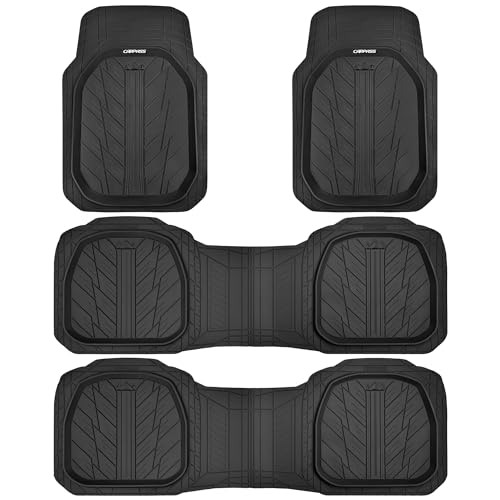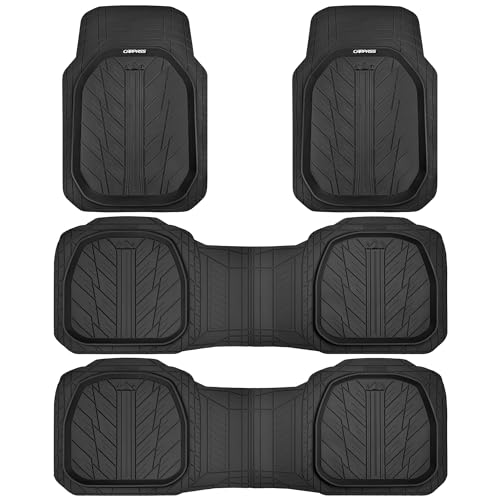SUVs have become ubiquitous on our roads, conquering cityscapes and highways alike. These versatile vehicles boast spacious interiors, impressive towing capabilities, and a commanding driving position. But where and when did these ubiquitous machines originate? The answer, like the SUV itself, is a fascinating journey that transcends a single date and location. Buckle up, as we explore the invention of the SUV, a story that begins not in a gleaming showroom, but on the muddy battlefields of World War II.
The Crucible of War: World War II and the Birth of the Off-Road Warrior (1930s-1940s)
Imagine navigating muddy trenches, uneven landscapes, and war-torn terrains. World War II presented a significant challenge for militaries: the need for vehicles that could conquer these harsh environments. Enter the stage for the invention of a vehicle that would redefine off-road capability – the Willys MB, more affectionately known as the Jeep.
Developed by the Willys-Overland Motors Company in the early 1940s, the Jeep wasn’t built for comfort or luxury. It was a utilitarian machine, designed with a singular focus: navigating the unforgiving battlefields. This lightweight, four-wheel drive vehicle possessed remarkable features for its time, including:
- High ground clearance: Allowing it to traverse obstacles with ease.
- A powerful engine: Providing the necessary muscle to conquer rough terrain.
- Simple and robust design: Ensuring reliability and ease of maintenance in harsh conditions.
The Jeep’s success wasn’t limited to the American military. Similarly, Germany developed the Kübelwagen, another lightweight off-road vehicle. While not as widely recognized as the Jeep, the Kübelwagen showcased the growing importance of off-road capability in wartime.
The invention of these military vehicles during World War II laid the groundwork for what would become the civilian SUV. The seeds of ruggedness, versatility, and off-road prowess were sown, waiting to be adapted for a new purpose – conquering the challenges of everyday life.
From Battlefield to Boulevard: The Jeep’s Civilian Encore (1940s-1950s)
The end of World War II saw a surplus of Jeeps – rugged machines no longer needed on the battlefields. This surplus presented a unique opportunity. These versatile vehicles, once symbols of military might, were poised for a new chapter – civilian life. Surplus Jeeps became readily available to the public, sparking a growing interest in off-road capable vehicles for everyday use. Farmers, ranchers, and outdoor enthusiasts flocked to these Jeeps, appreciating their functionality and ability to handle rough terrain beyond paved roads.
However, the Jeep, designed for wartime practicality, had limitations for everyday use. The open-air design offered little protection from the elements, and the spartan interior lacked the comfort features desired by families.
Recognizing this gap in the market, the Willys-Overland Motors Company introduced the Willys Wagon in 1946. This civilian-focused version of the Jeep offered a more practical solution. The Willys Wagon featured an enclosed cabin, providing shelter from the elements. It also boasted increased cargo space, making it a viable option for families and those seeking a more practical off-road companion.
The success of the Willys Wagon further fueled the civilian SUV market. Another key player emerged in the 1950s – the American Motors Corporation (AMC) (entity). While Jeep remained a dominant force, AMC saw the potential for a more refined take on the off-road vehicle. This stage was set for the evolution of the SUV from a utilitarian surplus machine to a vehicle catering to the diverse needs of everyday drivers.
Beyond Jeeps: The Rise of Competitors and Early Diversification (1950s-1960s)
The roar of the Jeep wasn’t the only engine driving the evolution of the SUV. While Jeep held a dominant position, the 1950s and 60s witnessed a surge in competition, further shaping the landscape of the civilian SUV market.
Across the Atlantic, another iconic off-road vehicle emerged in 1948 – the Land Rover . Developed by the Rover Company in England, the Land Rover shared some similarities with the Jeep. It boasted a rugged design, impressive off-road capability, and a focus on utility. However, the Land Rover also carved its own niche, known for its exceptional towing capacity and ability to handle particularly challenging terrains.
The competition extended beyond the Atlantic. In 1961, the American market saw the arrival of the International Harvester Scout (entity). This off-road focused vehicle offered a powerful engine and a no-frills approach, appealing to those seeking a pure off-road experience.
A crucial development during this era was the introduction of four-wheel drive (4WD) systems for civilian SUVs. Previously, 4WD was primarily a military feature. However, companies like Jeep began offering 4WD options on civilian models, significantly enhancing their off-road prowess and appealing to a wider audience seeking all-weather capability.
This era also marked the beginning of diversification within the SUV market. While off-road capability remained a core element, some manufacturers started exploring a more car-like driving experience for SUVs. This approach catered to drivers who desired a blend of practicality and comfort, venturing beyond the purely utilitarian roots of the early Jeeps.
The stage was set for a future where SUVs wouldn’t be confined to off-road adventures. They were poised to become versatile options for families, daily commutes, and even a touch of on-road comfort.
A Turning Point: The Jeep Cherokee (XJ) and the Unibody Revolution (1970s)
The evolution of the SUV took a significant leap forward in the 1970s with the introduction of the Jeep Cherokee (XJ) in 1974. Up until this point, most SUVs relied on body-on-frame construction. This method involved a separate frame for the chassis and a body mounted on top. While offering durability, body-on-frame construction had limitations:
- Heavier weight: This resulted in lower fuel efficiency and a less car-like driving experience.
- Rougher ride: The separation between the frame and body could translate to a bumpier ride on uneven terrain.
- Limited interior space: The bulky frame often restricted the amount of passenger and cargo space available.
The Jeep Cherokee (XJ) challenged these limitations by introducing a revolutionary concept – unibody construction. In unibody construction, the frame and body are integrated into a single unit. This innovative approach offered several advantages:
- Lighter weight: By eliminating the separate frame, the Cherokee (XJ) was significantly lighter than its predecessors. This led to improved fuel efficiency and a more agile driving experience.
- Smoother ride: The unibody construction resulted in a more car-like ride, making it more comfortable for everyday driving.
- Increased interior space: The integration of the frame allowed for better packaging of interior components, creating a more spacious cabin for passengers and cargo.
The Jeep Cherokee (XJ) wasn’t alone in the off-road arena. The Ford Bronco (entity), introduced in 1966, continued to be a strong competitor, known for its powerful engines and rugged off-road capability. However, the Cherokee (XJ)’s innovative unibody construction marked a turning point, paving the way for a new generation of SUVs that could offer both off-road prowess and a more comfortable on-road experience. This shift would ultimately lead to the widespread appeal of SUVs in the decades to come.
People Also Ask: What is the First Civilian SUV?
While the Jeep undeniably played a pivotal role in the development of the SUV, it’s important to acknowledge its origins as a military vehicle. However, the post-WWII era saw a surge in the availability of surplus Jeeps, sparking interest in civilian applications.
The Willys Wagon, introduced in 1946, stands as a strong contender for an early civilian-focused SUV. This Jeep variant offered a more practical solution for families with its enclosed cabin and increased cargo space. The Willys Wagon’s success solidified the potential for civilian SUVs, paving the way for further innovation and diversification within the market.
Conclusion:
The story of the SUV is a fascinating journey, born from the necessity of war and evolving into a ubiquitous presence on our roads. From the rugged functionality of the Jeep on World War II battlefields to the comfortable, feature-packed family haulers of today, the SUV has continuously adapted to meet the needs of drivers.
The key to the SUV’s enduring appeal lies in its versatility. It can conquer off-road trails with ease, offer ample space for families and cargo, and provide a commanding driving position for a sense of adventure. Whether navigating city streets, embarking on road trips, or tackling challenging terrain, SUVs have proven their ability to seamlessly integrate into our lives.
The future of the SUV promises even more innovation. As advancements in technology continue, we can expect even more efficient, comfortable, and potentially autonomous SUVs that cater to a diverse range of needs and lifestyles. One thing remains certain: the SUV’s journey is far from over, and it will continue to be a prominent player on the automotive landscape for years to come.
The SUV’s story is rich with fascinating details and exciting innovations. Want to delve deeper into the world of SUVs and explore the evolution of your favorite models? Head over to SUVTale.com!
At SUVTale.com, you’ll find:
- In-depth histories of iconic SUVs, tracing their journey from concept to legend.
- Engaging comparisons to help you choose the perfect SUV for your adventures.
- Valuable resources on the latest trends, features, and buying tips to ensure a confident SUV purchase.
So, buckle up and explore the exciting world of SUVs at SUVTale.com!
Let’s discover the perfect off-road companion or the ideal family hauler – together.

